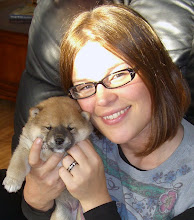Amazing to find these in the city - I only found about 4, but from those four I made a couple of meals and filled 8 trays very full in the dehydrator. The weather was cold and therefore the maggots hadn't gotten them - in fact, they were in near perfect condition.
I've put in a cover crop (crimson clover) and fava beans in the back section of the garden. The clover is up and doing well but I haven't seen anything from the fava beans yet. I planted garlic and want to get some shallots in, but think it might be getting late for the latter. Already I am feeling the crunch for space, but my friend pointed out that there are a few terraces in the front of the house. I haven't asked if I could dig these up yet, and probably won't do anything about them until spring, but now I feel like I have a bit more space - and space that gets quite a bit of sunlight as well (for Seattle, at least). Greg is thinking about putting some raspberry bushes up there and I think tomatoes would find a good home there as well.
I've got my green cones - one is in and the other I'm working on. It feels good to be recycling my food scraps in my own backyard for compost on MY garden.
Although it is too late to start anything outside, I am going to try my hand at sprouts. It seems easy enough and sprouts are really nutritious. The biggest 'problem' with growing your own sprouts is that they need to be rinsed at least every 12 hours, which can be problematic if you're away a lot. While that is often the case for me during late spring through early fall, right now it is down time and I don't feel that the rinsing requirements will be a problem. I've got adzuki beans soaking right now. I'd like to get broccoli and clover sprouts going, but I haven't found a local source for seed yet. I may just order them online instead.
My place is starting to come together quite well - Greg and I just bought a type of 'baker's rack' that now makes it possible to put away all the kitchen items. It also looks pretty nice as well, and I made sure that I was buying something that was not only durable, but able to be broken down and transported when we move in the future. I need to get a few more things - a wooden shelf for the bathroom items, a bedside drawer unit, a tv stand, and a shoe rack for near the door - but money is tight right now so those things will have to wait.
All in all, if I could just get this damn thesis over, I'd be one happy person :)




